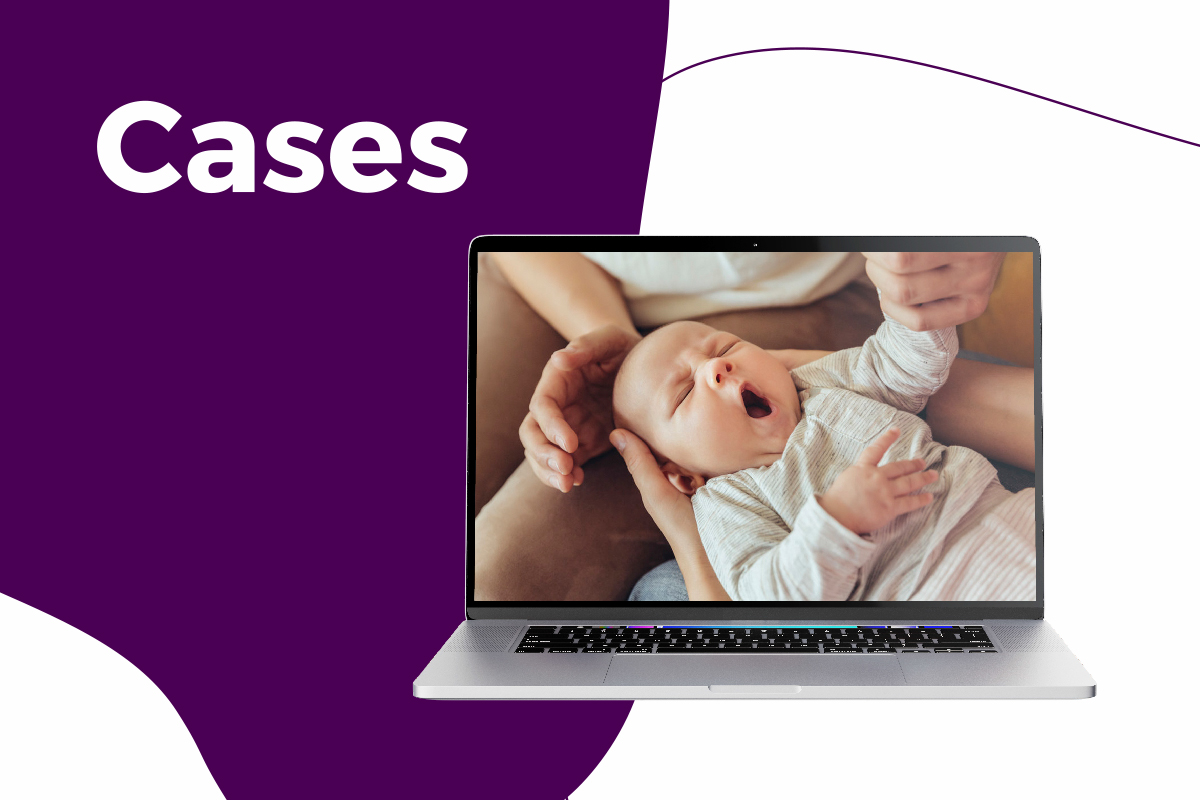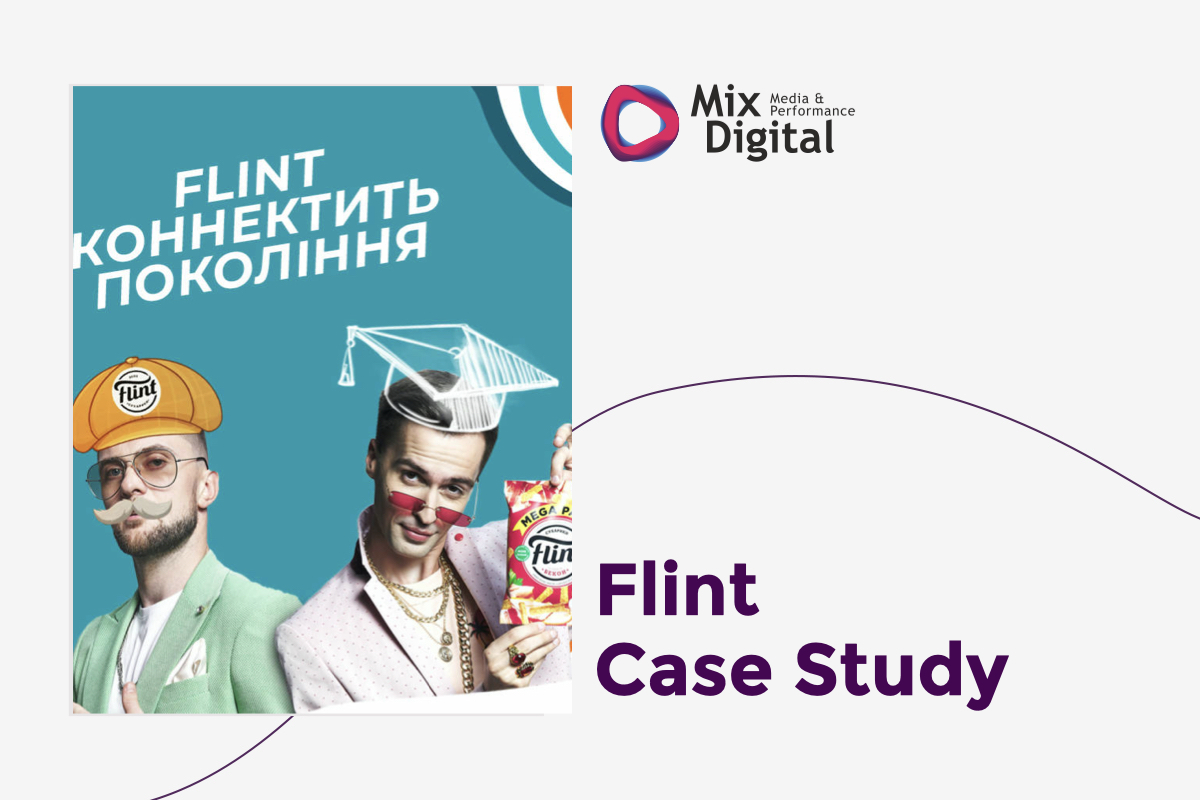Young parents are a volatile target audience. At first, the baby suffers from colic. Then their teeth start teething. And after that, it’s time to start introducing complementary alimentation. Parents’ concerns may change almost weekly. And if a product is intended for such parents, how can one create and retain awareness about it in a volatile market?
Our client is a pharmaceutical company that has been producing a colic remedy since 2011. The parents are faced with newborn baby colic during the first three months, the target audience is constantly changing and the sales levels must be maintained. Together with our colleagues, the ViViD creative agency, we will tell you what strategy we have chosen, what our approach to planning was, and how the brand still holds a leading position in the market.
How to increase market share and divert attention away from competitors
Before the start of the campaign, there were only two major players in the market. Our task was to increase Simethicone’s market share and brand awareness. The brand was supposed to acquire more leads throughout the year. It was necessary to shift attention away from competitors. We had to analyze advertising campaigns according to different parameters, consider site analytics and determine the best converting tools.
Target audience — women ranging from 20 to 35 years old, with children 0-3 months old. Geography — all of Ukraine, excluding temporarily occupied territories.
We analysed brand positions relative to the competitors along with their advertising approaches. Other companies were driving up their digital activities (by 16% in 2019 compared to 2018). Competitors were increasing their OLV-communication share. This format enjoyed popularity among the target audience.
43% of all ad impressions were delivered in video format. Media activity in the category grew seasonally: from late summer to December. This provided an additional opportunity to shift attention away from competitors.
How to reach target audience: creatives and channels
Women 20-35 years old with children 0-3 months old are the core target audience of our competitors’ communication. They spend most of their time online and have learned how to filter out ads in the flow of information clutter.
Our colleagues from the ViViD agency worked on the creative part of the campaign. The creatives were supposed to highlight the cause of the problem, tell about the effective and mild action of the remedy, while not annoying mothers because they were already tired of their crying babies at night. “We had to get around this image in the video and avoid showing a baby suffering from colic while telling about the positive effect of the remedy. We had to make sure that the video is positive, attractive and uplifting — says Katerina Overko, Creative Director of ViViD. We decided to give the story a flair of goodness and fabulousness and make it stand out among the directed videos of our competitors, which were stacked with crying babies. Our banner creatives have been implemented completely in line with the video. We managed to keep the maximum amount of motion, so the banners looked like full-fledged small videos, and not like creatives with primitive animation”.
We shaped communication channels based on the user journey of the target audience and its digital behavior. Furthermore, we made a selection of the most visible formats. We had to communicate not only at the stage of generated demand. For that purpose, we developed 2 models of audience behavior that we used as a basis for our channel planning:
Channels had to match the interests of the target audience and its user journey, provide a high level of audience reach while making it possible to accommodate a wide range of creative formats and targeting options. When planning channels, we paid attention to our competitors’ approach and the possibility of real-time optimization.
Reach, traffic, working with demand: how to achieve goals through a combination of tools
To build and maintain awareness about the product, we used a split of video and banner ads as the most effective one.
Since the audience is dynamic and constantly renewing, it was important to use flexible options, granted by the targeting tools, as well as to choose the channels that are relevant to the consumption of the target audience. Digital channels were the only advertising inventory that we had at our disposal, so we selected periodic communication (with a monthly interval) on an effective frequency. This helped to split the budget more effectively and reach the constantly renewing audience.
- For video advertising, we employed YouTube as the most popular video platform, using the TrV In-stream format with a pay-per-view model.
- Programmatic procurement through Google Display & Video 360 system helped to build reach with a set of standard noticeable banners.
- For the additional reach of the mobile audience, we employed the half-screen format placement on the Admixer “Mommies” package sites and placed ads in mobile applications related to pregnancy.
- From a range of dedicated resources, we selected the kidstaff.com.ua portal for placement in the “branding” image format.
- We used search ads and remarketing to generate traffic.
- We engaged traffic generation through social networks, in particular Facebook Ads, with postings to news feeds and Facebook/Instagram “stories”.
- We worked with the generated demand by placing paid ads in Google search for the brand and commercial search queries, as well as for queries with competitor-related keywords. TradeDesk allowed us to re-engage with site visitors and gather audiences for remarketing campaigns.
Campaign Manager for measuring results: which is more important, Post-Click or Post-View?
We used Campaign Manager to verify the placements. It helped to analyze the impact of display advertising in the context of performance – on-site actions, searches, concerning availability in pharmacies, and so on.
Post-Click Analytics metrics provide only a fractional picture of the impact of media tools on conversions. Along the user journey to purchase, on the last step, direct response tools were engaged. The Campaign Manager helped to assess the contribution of the individual tools for Post-View conversions as well.
Here’s how the conversions were distributed by ad interaction type:
- Post-Click: 9.4% – navigated to the site through ads and returned after the end of the ad campaign.
- Post-View: 50.3% – saw the ad, did not click but visited the site after the end of the ad campaign.
- Cross-Device: 40.3% – navigated to the site or saw ads on one device, and returned to the site from another device after the end of the ad campaign.
The analysis confirmed that the number of time-delayed conversions was just as high. We figured out the stretch of the post-campaign period when users actively return to the site. We also determined the effective display ads frequency that leads to follow-up actions on the site. In April 2021, the sales target was reached by 125%. The remedy ranks third in sales among competitors.








